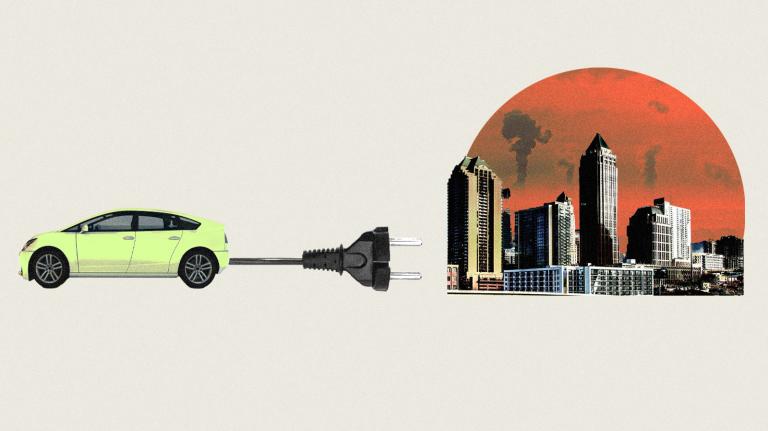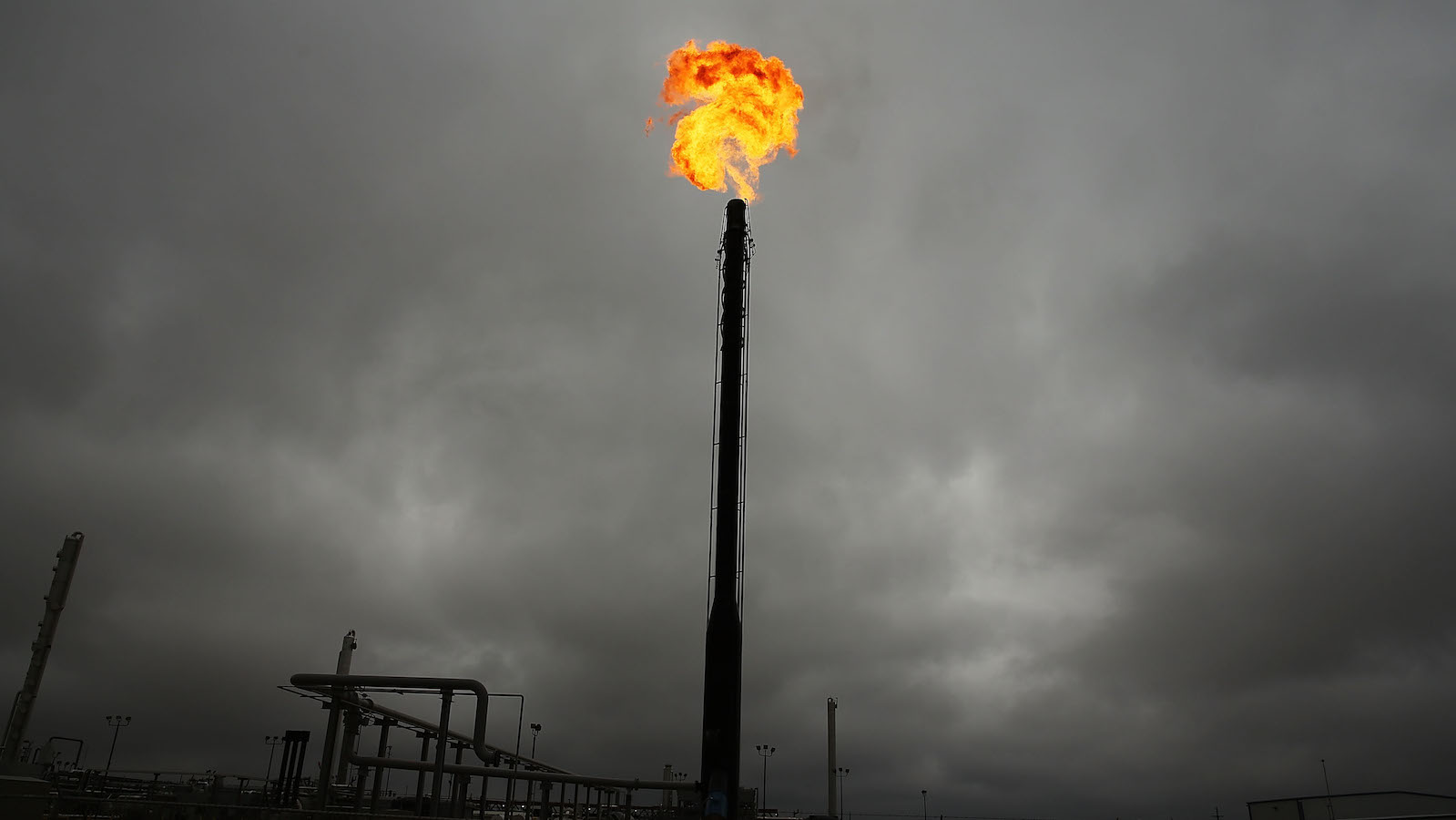After a winter storm tore through Houston last week, the neighborhood of Manchester, like many others across the state, was left in the dark. For days after the storm, the community had no power, and nothing to light up the streets at night — save for a faint glow coming from the nearby Valero oil refinery. Through the night, the refinery’s flare towers lit up the neighborhood like enormous, flickering candles — and emitted thousands of pounds of pollutants.
Throughout Texas, as the storm approached and in its aftermath, refineries scrambled to burn excess natural gas in order to prevent damage to equipment. The winter storm in Texas was responsible for the emission of 3.5 million pounds of excess pollutants, across 200 industrial facilities, including oil refineries and petrochemical plants, due to the impacts of freezing conditions. Pollutants emitted included benzene, carbon monoxide, hydrogen sulfide, and sulfur dioxide, according to data provided by the polluting facilities to the Texas Commission on Environment Quality. Between Sunday and Monday of last week, the Valero refinery in Manchester emitted 6,468 pounds of carbon monoxide along with 3,314 pounds of sulfur dioxide and 1,156 pounds of nitrogen oxide — pollutants that cause coughing and throat irritation, asthma attacks, and higher risk of heart disease or exacerbated heart disease. “These emissions can dwarf the usual emissions of the refineries by orders of magnitude,” Jane Williams, chair of the Sierra Club’s National Clean Air Team, told Reuters.
As Texans across the state navigated the overlapping crises of power outages, water and food shortages, and the ongoing threat of the pandemic, communities adjacent to petrochemical facilities faced the additional burden of the surge of pollutants. When the ice and snow subsided last Monday morning, Nalleli Hidalgo, a community organizer from T.e.j.a.s, an environmental justice advocacy group based in Houston, biked through the city to assess the situation. As soon as she got close to Manchester, an overpowering smell hit her — the air filled with an odor like nail polish remover, immediately giving her a headache.
Pollution and the pandemic alike have disproportionate impacts on Black and Hispanic communities in Texas and nationwide — and the storm exacerbated the same inequities. The pollutants released due to the storm have acute and long-term impacts on the health of nearby communities. These impacts fall disproportionately on Black, Latino, and low-income households, due to the legacy of racist industrial siting policies; like many other frontline communities, Manchester has a predominantly low-income and non-white population. Manchester faces a soup of polluting practices that have deadly health consequences for people living in the community — the cancer risk in the community is 22 percent higher than the overall Houston area. What’s more, in a disaster, communities like Manchester “are the first affected and the last to receive aid,” said Ana Parras, executive co-director of T.e.j.a.s.
Though on average winters are getting warmer in Texas and everywhere else, there is a potential climate change link between warming Arctic temperatures and extreme cold like the subfreezing temperatures that affected Texas last week — but it’s still disputed by scientists. Either way, the risks of power outages and pollution will only increase as climate change accelerates extreme weather events. “This is untenable, especially for communities of color and working-class neighborhoods,” said Bakeyah Nelson, executive director of Air Alliance Houston, in a press release. “These communities are unable to fully recover before the next man-made disaster due to a long history of environmental racism that has put them at greater risk of suffering the adverse impacts from disasters and with fewer resources to rebuild their lives.”
Moving forward, Hidalgo says that the solution to preventing future disasters is to invest in “renewable energies and green infrastructures that are weatherized.” A federal report following a similar storm in 2011 that led to power outages recommended that oil and gas infrastructure be winterized to prevent outages during extreme cold, but warnings were repeatedly ignored by Texas politicians and regulators. And as climate change increases the risk of extreme weather events, improving the resilience of Texas’ energy grid, which is isolated from the rest of the country in order to avoid federal regulation, becomes even more essential. In the meantime, communities like Manchester will continue to bear the costs.




